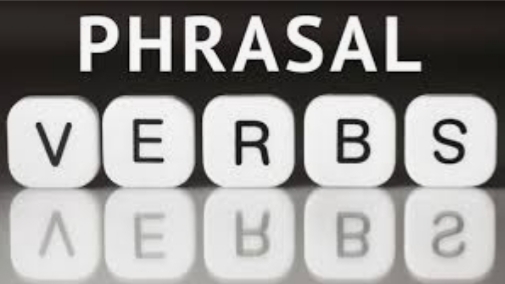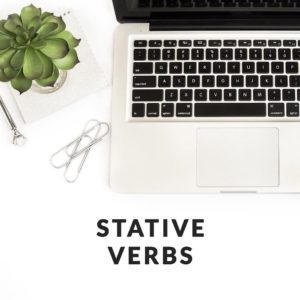When anything progresses, it may get harder to understand or even comprehend. Today we will dissect the English language even further and talk about phrasal verbs, one of the more complicated areas in the English language, yet something we use every day.
Phrasal Verbs
Learning English consists of several areas and one must focus on the basics to master English speech. English is the most common language spoken on the face of this planet. In fact, wherever you go, you must know English in order to communicate and survive. Learning English however isn’t that hard unless you don’t focus on the basics. Once the basics are covered, the rest comes to a person with practice and time.
Today we will be covering another fundamental concept in English speech known as Phrasal Verbs. A phrasal verb isn’t that easy to understand as it’s a combination of a variety of words that together give meaning to a sentence. What makes phrasal verbs so hard to understand is because of the many meanings they may have and how commonly they are used.
Take for example the phrasal verb put down, this phrase could hold multiple meanings such as: to humiliate, to place something, or to kill a sick or injured animal. However, even if these words are used together, the meaning often is veiled. Hence, a phrasal verb can be defined as a verb that is composed of the main verb along with an adverb or a preposition. These simple words will essentially make a short phrase hence the term phrasal verb. Let’s take a look at a few examples:
- Put down
- Look away
- Stop talking
- Turn on
When dealing with phrasal verbs, there are three possible combinations that can be formed from a single verb, which in turn gives way to the four types of phrasal verbs. At times, a preposition or an adverb can together be used along with the main verb. One thing that needs to be noticed here is the fact that normally the individual words used in a sentence do not show any meaning. However, when combined together the sentence becomes meaningful like in the example below:
“The woman has always looked down on me.”
This example shows how words can be used in the form of phrasal verbs in order to convey the meaning that is primarily veiled. This sentence doesn’t imply that a woman is tall or at a higher place and looks down on the speaker. Rather, it implies that the woman has always considered herself better than the person speaking the sentence. Moving on, let’s look at all three phrasal verb combinations:
- Verb/Adverb
- Verb/Preposition
- Verb/Adverb/Preposition
Verb/Adverb
Let’s take the single verb yell. Now let’s add the adverb loudly. Now let’s put those two words together to form a phrasal verb:
- “She had to yell loudly over the music”
With the verb/adverb combination, these phrasal verbs can either be transitive, meaning, having a direct object, something in the sentence that makes it make sense or intransitive, meaning, not having a direct object. For those who are interested in learning English should take into account the aspect of transitivity when it comes to phrasal verbs. For a better understanding to help clear any doubts, let’s take a look at these examples which also brings us to the four types of phrasal verbs:
Type 1: Intransitive (Phrasal verbs with no object):
- “I don’t like to be late.”
- “She always looked down on him.”
Type 2: Transitive (Phrasal verbs which have an object):
- “We will need to shut down the machines.”
- “The police were called to break up the dispute.”
In the second set of examples, we can see that they contain objects in their phrases, unlike the first examples. In example one, the machines are the object and in example two, the dispute is the object.
Type 3: Separable
When dealing with a direct object, normally this phrase type can be separated into two parts, hence its name. Let’s look at a couple of examples:
“Turn up my music.” This sentence can also be separated into: “Turn my music up.” Of course, there are exceptions to this and that comes into play when a pronoun is introduced. When this happens, meaning if the direct object is a pronoun there is no other choice except to make the separation of the verbs and enter the pronoun for it to grammatically make sense. Take a look at the below examples with the verb phrase turned off:
- “Lucy turned off the radio.” ✔
- “Lucy turned the radio off.” ✔
- “Lucy turned it off” ✔
- “Lucy turned off it.” ❌
As you can see, in the last two examples a pronoun was introduced and per the rules, we have no choice but to separate the two verbs and enter the pronoun it between them for the sentence to make sense.
Verb/Preposition
This type of phrasal verb combination will always have a direct object because prepositions always have an object, which means this verb phrase is transitive. Prepositional verbs, which this combination is also called, cannot be separated. This brings us to the fourth type of phrasal verbs called, inseparable. Let’s take a look at an example of this:
Type 4: Inseparable
- “Look after the car.”✔
- “Look the car after.”❌
As you can see in the examples, the car is the direct object, but as you can also see, this phrasal verb type cannot be separated in order for it to make sense. In other words, as in example two, the object cannot be placed in between the verb look and the particle, i.e the preposition after in this example.
Verb/Adverb/Preposition
Finally, we have made it to the third combination of phrasal verbs also known as Phrasal-Prepositional Verbs and because this phrasal verb type ends in a preposition just like the phrasal verb type two, this one will also, always have a direct object, making it a transitive. Also, just like the phrasal verb, verb+preposition, this type cannot be separated either. Let’s take a look at a few phrasal-prepositional verb examples:
- “Make quickly since.”
- “Look forward to.”
As you see in example one, the phrase follows this phrasal verb combination. Make is the verb followed by the adverb quickly and lastly the preposition since. Same in example two, verb+adveb+preposition, now let’s turn these phrases into sentences.
- “We must make quickly since the clay will harden soon.”
- “I look forward to seeing my nieces.”
As you can see, because the phrasal verb ends in a preposition, these sentences cannot be separated in order for them to continue to make sense grammatically.

Learning English and acquiring the basic rules of grammar are important in English speech as well. Phrasal verbs can be tough to grasp especially in the beginning but if you keep your focus geared towards it then nothing is impossible. Writing can be hard work, but it’s not beyond the bounds of possibility and can be learned with a little bit of dedication and patience.
Fortunately, there are other tools to help better learn English as well as other languages such as Babbel, but with anything, you must practice and then practice some more because practice makes perfect. Before you move on, test your skills on phrasal verbs in the short video below.


